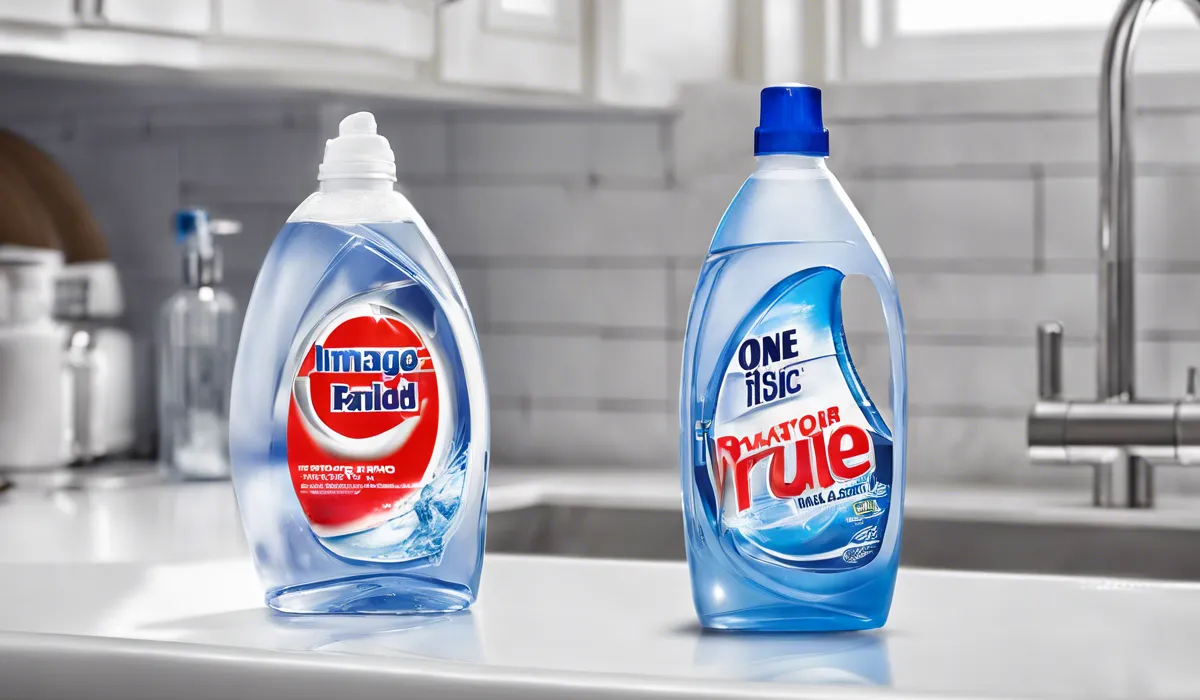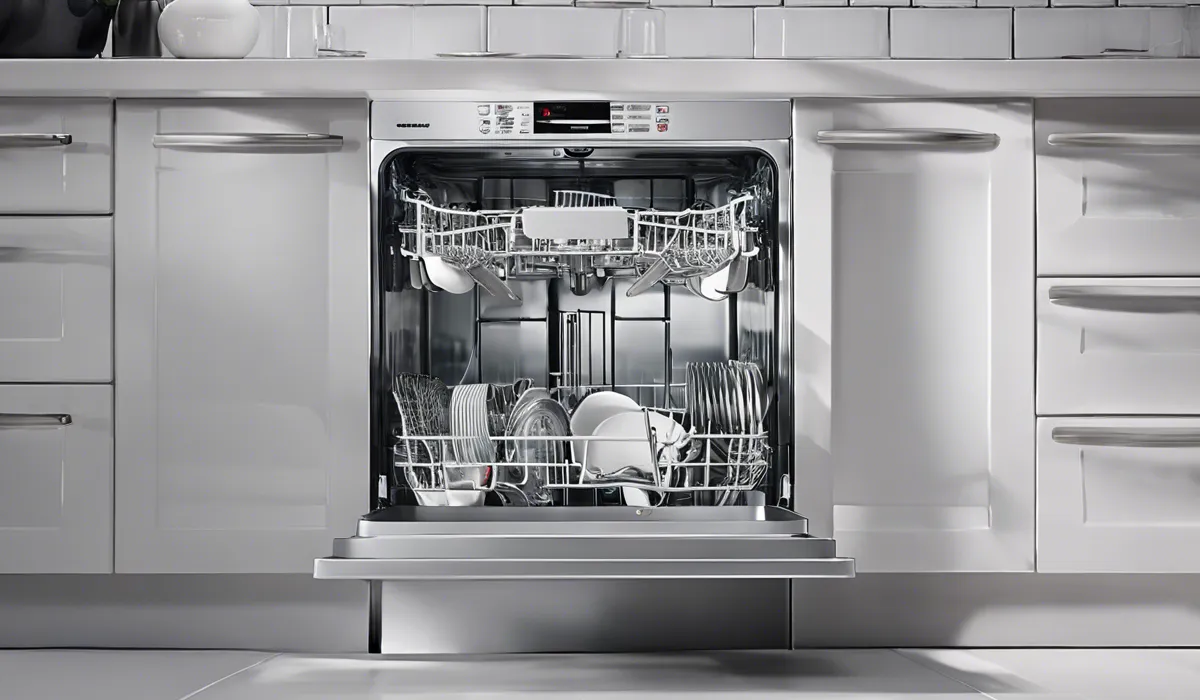What to Put in Dishwasher Rinse Aid: Top Substitutes!
In the dishwasher rinse aid compartment, use only designated rinse aid products. These are specially formulated to prevent water spots and enhance drying. Do not substitute with hand soap or other cleaners, as they can cause foaming and damage your machine.
Understanding Dishwasher Rinse Aid

What Is Rinse Aid?
Rinse aid is a dishwasher additive designed to eliminate water spots and ensure dishes dry clear and streak-free.
It is a surfactant that breaks the bond between water molecules and dish surfaces, reducing surface tension and allowing water to spread thinly and evaporate quickly.
Why Use Rinse Aid?
Using rinse aid in a dishwasher isn’t just about aesthetics; it serves a practical purpose.
Rinse aid helps with the drying process, prevents water spots caused by minerals in the water, and enhances the overall cleaning performance by allowing water to sheet off dishes more effectively.
Functionality of Rinse Aid
Rinse aid works by improving the rinsing phase of the dishwashing cycle. As water cascades over your dishes, the rinse aid ensures it doesn’t cling and leave deposits.
This process is particularly important if you have hard water, which can leave significant mineral spots on glassware.
Suitable Substances for Dishwasher Rinse Aid

Commercial Rinse Aid Ingredients
Most commercial rinse aids contain ingredients like non-ionic surfactants for spot-free results, and sometimes alcohol or citric acid to speed up drying. They often include preservatives and coloring agents as well.
These products are rigorously tested to ensure they work effectively in a variety of dishwashers.
Natural Rinse Aid Options
For those looking for a more natural approach, white vinegar is a popular alternative.
It can help to remove water spots due to its acetic acid content, which works to neutralize the alkaline minerals in hard water. However, its effectiveness compared to commercial rinse aids may vary.
Homemade Rinse Aid Precautions
If you decide to go the homemade route, it’s essential to be cautious. Improper substances can damage the dishwasher or leave behind residues.
Stick to tested natural substances like vinegar and avoid using anything with soaps, dyes, or thickeners that might clog the dispenser.
Best Practices for Using Rinse Aid

Filling the Rinse Aid Dispenser
To fill the rinse aid dispenser, locate it on the dishwasher door, usually next to the detergent compartment. Open the cap and pour in the rinse aid until the reservoir is full, being careful not to overfill. Close the cap securely to prevent leaks during the wash cycle.
Optimal Rinse Aid Quantity
The amount of rinse aid your dishwasher needs per cycle can vary depending on the hardness of your water and the model of your dishwasher.
Most dishwashers have an adjustable setting that allows you to control the amount dispensed. Start with the manufacturer’s recommendation and adjust as needed for spotless dishes.
Maintenance and Troubleshooting
Regular maintenance of the rinse aid compartment is important to prevent blockages and ensure its effectiveness.
Clean the dispenser occasionally with a damp cloth to remove any buildup. If you encounter issues like over-foaming or under-dispensing, consult the dishwasher’s manual or contact the manufacturer for guidance.
By understanding what to put in your dishwasher’s rinse aid compartment and following best practices for use, you can enjoy spotless, sparkling dishes after every wash.
Remember, only use products designed for dishwashers to avoid any potential damage.
FAQs About Dishwasher Rinse Aid
What should I put in my dishwasher rinse aid compartment?
Only use designated rinse aid products specifically formulated for dishwashers to prevent water spots and enhance drying.
Can I use hand soap as a substitute for dishwasher rinse aid?
No, do not use hand soap or any other cleaners as they can cause foaming and damage your dishwasher.
What happens if I put the wrong product in the rinse aid compartment?
Using the wrong product, like hand soap, can lead to excessive foaming and potentially damage the dishwasher’s internal components.
Is vinegar a safe alternative for dishwasher rinse aid?
Vinegar is sometimes used as a homemade rinse aid alternative, but it’s best to consult your dishwasher’s manual first, as it can damage rubber parts over time.
How do I know when to refill the dishwasher rinse aid compartment?
Most dishwashers have an indicator light or a clear window on the rinse aid compartment to show the level and signal when it needs refilling.
Final Thoughts
It is essential to fill the dishwasher rinse aid compartment with products specifically designed for that purpose. These products help prevent water spots and improve drying efficiency.
Substitute agents like hand soap can lead to foaming and potentially damage the dishwasher, and should therefore be avoided.






